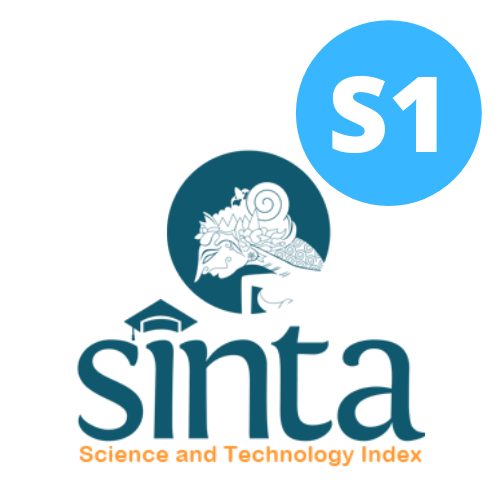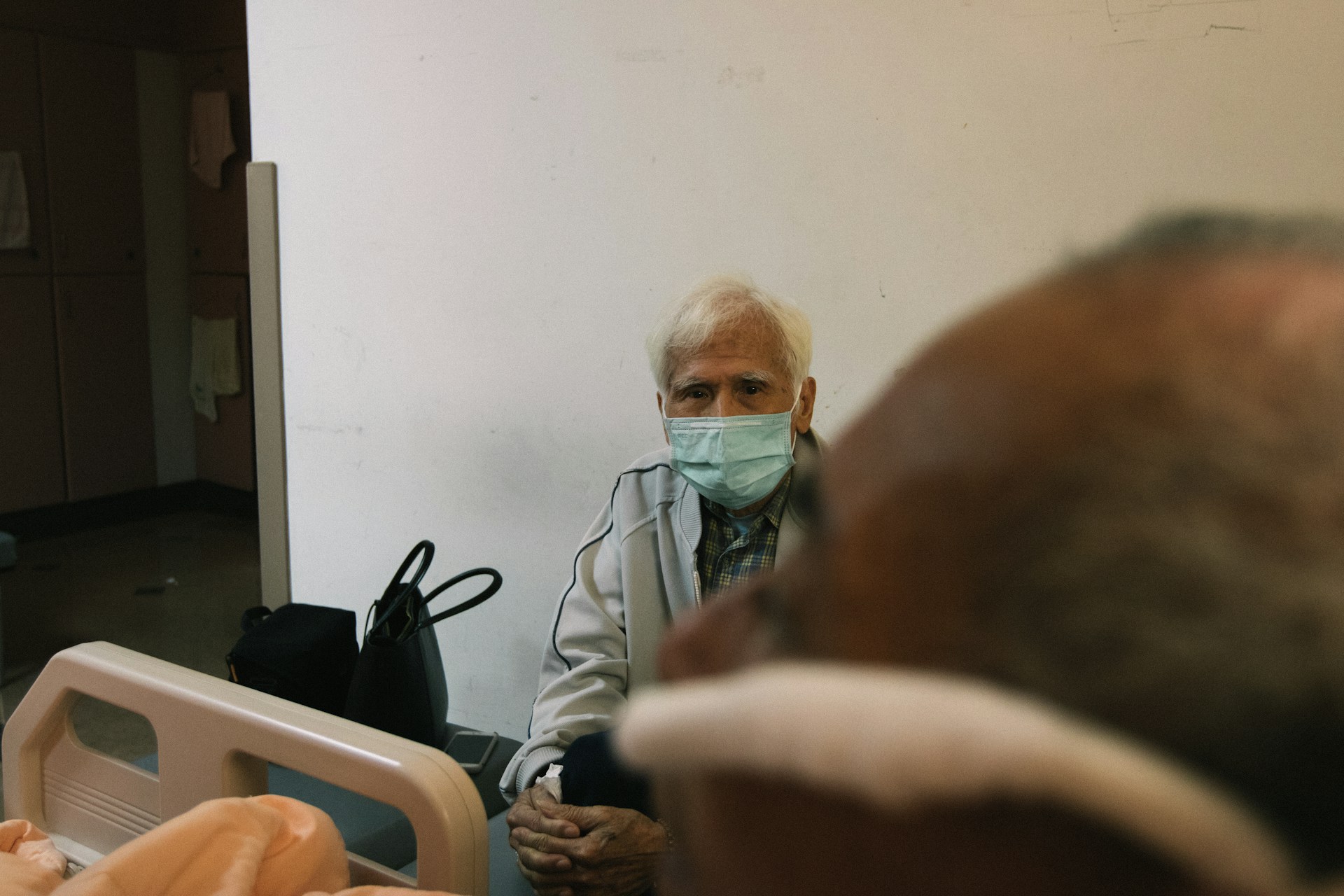The Interaction of Three Types of Undernutrition and Health Insurance Subscriptions at the Children in the Karawang Coastal Area, Indonesia
Interaksi Tiga Jenis Kekurangan Gizi dan Langganan Asuransi Kesehatan pada Anak di Pesisir Karawang, Indonesia
Downloads
Background: Three types of undernutrition including stunting, underweight, and wasting, are a global public health problem. In terms of policies, guidance, programming, and financing, they are mostly separated while all of them are caused by poor diet.
Objectives: This study aimed to identify the association of underweight and wasting status with stunting of the children and health insurance subscriptions in the Coastal Area.
Methods: This was a cross-sectional study involving children aged 6 to 59 months. Demographic backgrounds were obtained from parents through a questionnaire. Height and weight were measured. Z-scores for height-for-age, weight-for-age, and weight-for-age were determined and classified using WHO AnthroPlus software. The binary logistic regression test was used to identify the association of variables.
Results: A total of 108 children participated in the study. The prevalence of stunting, being underweight, and wasting was 21.3%, 21.3%, and 13.9% respectively. It was found that most demographic characteristics (age, gender) and health insurance were similar in each of the undernutrition types, except for age level in stunting children. The risk of stunting in underweight children is significant differences, but not for wasting children in the coastal area. This study also shows that there is a significant correlation between the incidence of stunting with wasting and being underweight in children in the coastal area of Karawang.
Conclusions: Overall, underweight children tend to have a stunting risk. The policy and community-based program need to not focus on one category of undernutrition only, but also on other types of undernutrition simultaneously, with the aim that nutritional problems in children can be handled holistically.
Health Ministry of Indonesia. Ministry of Health Performance Report 2020. Health Ministry of Indonesia (2021).
Health Ministry of Indonesia. Basic Health Research of Indonesia 2018. Health Ministry of Indonesia 198 (2018).
Health Ministry of Indonesia. The stunting prevention is important. Data Inf. Center, Heal. Minist. Indones. 1–27 (2018).
Karyadi, E. Stunting: a multisector challenges and unfinished nutrition agenda. Universa Med. 38, 69–72 (2019).
Chen, L. & Chu, L. Does health insurance coverage lead to better child health? Evidence from China. China Popul. Dev. Stud. 3, 1–23 (2019).
Issa, A. Determinants of Childhood Stunting in Egypt: Further Analysis of Demographic and Health Survey 2014 Using Generalized Logistic Regression Approach. (2019).
Suriati & Farisni, T. N. the Relationship Between Nutritional Health Services for Pregnant Women and the Incidence of Stunting in Lhok Bot, Aceh Jaya. Clin. Med. Insights 03, 1–8 (2022).
Menon, P. & Stoltzfus, R. J. Building convergence in science, programs, and policy actions on child undernutrition: Symposium rationale and overview. Adv. Nutr. 3, 224–226 (2012).
Martorell, R. & Young, M. F. Patterns of stunting and wasting: Potential explanatory factors. Adv. Nutr. 3, 227–233 (2012).
Hawkes, C., Haddad, L. & Udomkesmalee, E. The global nutrition report 2015: What we need to do to advance progress in addressing malnutrition in all its forms. Public Health Nutr. 18, 3067–3069 (2015).
Yoshida, S. Approaches, tools and methods used for setting priorities in health research in the 21st century. J. Glob. Health 6, (2016).
Rudan, I. et al. Setting health research priorities using the CHNRI method: VII. A review of the first 50 applications of the CHNRI method. J. Glob. Health 7, (2017).
Myatt, M. et al. Children who are both wasted and stunted are also underweight and have a high risk of death: A descriptive epidemiology of multiple anthropometric deficits using data from 51 countries. Arch. Public Heal. 76, 1–11 (2018).
Bose, K. et al. Stunting, underweight and wasting among Integrated Child Development Services (ICDS) scheme children aged 3-5 years of Chapra, Nadia District, West Bengal, India. Matern. Child Nutr. 3, 216–221 (2007).
Blankenship, J. L., Cashin, J., Nguyen, T. T. & Ip, H. Childhood stunting and wasting in Myanmar: Key drivers and implications for policies and programmes. Matern. Child Nutr. 16, 1–8 (2020).
Danaei, G. et al. Risk Factors for Childhood Stunting in 137 Developing Countries: A Comparative Risk Assessment Analysis at Global, Regional, and Country Levels. PLoS Med. 13, 1–18 (2016).
Lincoln Lenderking, H., Robinson, S. ann & Carlson, G. Climate change and food security in Caribbean small island developing states: challenges and strategies. Int. J. Sustain. Dev. World Ecol. 28, 238–245 (2021).
Schnitter, R. et al. An assessment of climate change and health vulnerability and adaptation in dominica. Int. J. Environ. Res. Public Health 16, (2019).
Chikhungu, L. C. Trends and patterns of stunted only and stunted- underweight children in Malawi : A confirmation for child nutrition practitioners to continue focusing on stunting. 34, 111–117 (2022).
Dranesia, A., Wanda, D. & Hayati, H. Pressure to eat is the most determinant factor of stunting in children under 5 years of age in Kerinci region, Indonesia. Enferm. Clin. 29, 81–86 (2019).
Acquah, E., Darteh, E. K. M., Amu, H. & Adjei, D. K. A. Predictors of underweight in children under-five years in Ghana. Ghana Med. J. 53, 71–78 (2019).
Nshakira-Rukundo, E., Mussa, E. C., Gerber, N. & von Braun, J. Impact of voluntary community-based health insurance on child stunting: Evidence from rural Uganda. Soc. Sci. Med. 245, 112738 (2020).
Dror, D. M. et al. What factors affect voluntary uptake of community-based health insurance schemes in low- and middle-income countries? A systematic review and meta-analysis. PLoS One 11, 1–31 (2016).
Garenne, M., Myatt, M., Khara, T., Dolan, C. & Briend, A. Concurrent wasting and stunting among under"five children in Niakhar, Senegal. Matern. Child Nutr. 15, e12736 (2019).
Chowdhury, T. R. et al. Factors associated with stunting and wasting in children under 2 years in Bangladesh. Heliyon 6, e04849 (2020).
Copyright (c) 2022 Amerta Nutrition

This work is licensed under a Creative Commons Attribution-ShareAlike 4.0 International License.
AMERTA NUTR by Unair is licensed under a Creative Commons Attribution-ShareAlike 4.0 International License.
1. The journal allows the author to hold the copyright of the article without restrictions.
2. The journal allows the author(s) to retain publishing rights without restrictions
3. The legal formal aspect of journal publication accessibility refers to Creative Commons Attribution Share-Alike (CC BY-SA).
4. The Creative Commons Attribution Share-Alike (CC BY-SA) license allows re-distribution and re-use of a licensed work on the conditions that the creator is appropriately credited and that any derivative work is made available under "the same, similar or a compatible license”. Other than the conditions mentioned above, the editorial board is not responsible for copyright violation.












































